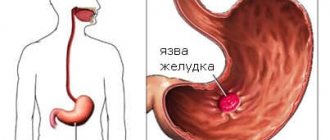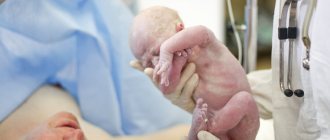Trichomoniasis, also known as trichomoniasis or trichomonas urogenital infection, all terms are absolutely equal. It is a well-known sexually transmitted infection, which people are not very afraid of contracting, and there is an explanation for this - it is easily treated. But this is still a sexually transmitted infection, and like all infections of this localization, it can cause inflammation of the organs responsible for reproductive capabilities, and under unfavorable clinical circumstances, lead to infertility.
Trichomoniasis (trichomoniasis) is a sexually transmitted disease, and according to the law, you cannot obtain a medical certificate without testing for this infection. If you have ever had sex without a condom, you may have trichomoniasis. The fact is that in the vast majority of women it does not manifest itself in any way.
Among all those suffering from sexually transmitted infections, every tenth person suffers from trichomoniasis, and often other urogenital infections coexist with it. It is estimated that a little more than 150 million people in the world suffer from trichomonas infection every year; in Russia, in every thousand adult citizens there is one patient with trichomoniasis, and in recent years the incidence has been decreasing. True, no one can guarantee that this frequency of the disease corresponds to reality, because no more than half of those suffering from trichomoniasis come to doctors. The other half does not even suspect that they have the simplest microorganism Trichomonas vaginalis.
When did trichomoniasis appear?
The first to see Trichomonas 180 years ago was the French professor of microscopy at the Paris College de France, Alfred Francois Donnet, who studied human secretions. He found Trichomonas in the genital secretions of women in the half-world. Moreover, Trichomonas in one organism could peacefully coexist with syphilis and gonorrhea. Professor Donne did not know that it was Trichomonas; it was an unknown organism with no name yet. Two years later, the German zoologist Christian Gottfried Ehrenberg, whose life’s work was the simplest ciliates, for which he even traveled to Siberia, established the nature of vaginal “living creatures” - the simplest of the class of ciliates and gave its name. We stopped there, deciding that, like most ciliates, this one is also quite harmless, lives in the vagina and absorbs everything unnecessary.
So three and a half decades passed until the Russian obstetrician Ivan Pavlovich Lazarevich compared the frequent detection of Trichomonas with inflammation of the mucous membranes of the genital tract, identifying the microorganism as a possible culprit of the pathological process. But there was little interest in Trichomonas; worldwide recognition as a natural representative of the normal vaginal flora came to Trichomonas only in 1916, exactly 70 years after its first “publication.” Another 20 years later, again, our compatriots realized that Trichomonas is not a purely female microorganism, but a universal one, because they found it in the secretion of the prostate gland and even in the blood. However, it was only before World War II that Trichomonas was recognized as pathogenic—harmful to humans. And after another two decades they wondered how they became infected with it, whether it came from dirty water.
Treatment
Treatment of trichomoniasis should be carried out in all sexual partners, even if they have no clinical manifestations. For etiotropic treatment, the drugs of choice are modern 5-nitroimidazole derivatives: ornidazole, nimorazole and secnidazole, which are used orally.
• Ornidazole for adults according to the following regimen: on the first day - 1 g (in the morning), after 12 hours (in the evening) - 0.5 g, from the second day - 0.5 g 2 times a day with an interval (gap between doses) 12 hours; children - 25 mg/kg body weight per day in 2 divided doses. The course of treatment for acute trichomoniasis is 5-7 days, for chronic trichomoniasis - 10 days.
• Nimorazole 500 mg 2 times a day for 5-7 days or 2 grams 1 time a day for 1-2 days. After completion of the course, with bacteriological recovery, clinical symptoms of the disease may persist for several days.
• Secnidazole for adults, 2 g once in the morning on an empty stomach; children - 30 mg per 1 kg of body weight per day in 1, 2 or 3 doses once. Can be repeated after 2-3 and 7-9 days.
• Tinidazole orally for adults, 2 g in 1 dose or 250 mg 2 times a day for 7 days; children over 12 years old - 50-75 mg/kg body weight per day (no more than 2 g) once. If necessary, repeat at the same dose.
• Metronidazole is taken for 7 days: 1st day - 250 mg 2 times in 24 hours, 2nd day - 250 mg 3 times, from 3rd to 7th day - 250 mg 2 times [dose for the 1st course (CD) - 3.25 g].
For chronic forms of genital trichomoniasis, a 5-day course of intravenous drips of a 5% metronidazole solution, 100 ml daily, is indicated.
When taking metronidazole, the growth of Candida fungi is observed; for prevention, it is recommended to use natamycin (pimafucin) in the form of vaginal suppositories at night for 3-6 days. Metronidazole and tinidazole are now rarely used due to the widespread distribution of Trichomonas strains resistant to them. Nitroimidazole drugs are recommended to be combined with nitrofuran derivatives.
Nifuratel for acute forms, orally for adults, 200 mg 3 times a day, for chronic forms - 400 mg 3 times a day. Course - 7 days. Furazolidone is used 0.1 g 4 times a day for 3-4 days.
For women, topical vaginal suppositories with metronidazole or nifuratel once a day for 6 days. Men are shown daily urethral instillation of metronidazole 5% solution. The course of treatment is 7-14 days according to the doctor’s decision. Women are recommended to insert into the vagina 5-6 g of powder containing furazolidone with milk sugar in a ratio of 1:400-1:500, daily for 7-12 days. Klion-D* (metronidazole - 100 mg and miconazole - 100 mg) is effective; it is administered intravaginally in the form of tablets once a day in the evening for 10 days.
Treatment of mixed and combined invasions is complex.
When treating urogenital trichomoniasis in children, the recommended drug is ornidazole, an alternative drug is metronidazole (1 tablet - 250 mg) 25 mg/kg body weight once. Children 1-6 years old - 1/3 tablet 2-3 times a day; 6-10 years - 125 mg 2 times a day; 11-15 years - 250 mg 2 times a day. The course of treatment is 7 days.
After treatment, control studies are carried out no earlier than 6 weeks (until this period, species-specific DNA sequences of the pathogen are retained in the material, which will lead to a false-positive result). If the results of the study are positive, the patient is indicated for a second course of treatment.
Conclusion about recovery: disappearance of discharge from the patient, absence of trichomonas in repeated studies after provocations, normalization of the mucous membrane during urethroscopy and absence of relapses for 2 months.
Etiological recovery is registered in the persistent absence of clinical picture and trichomonas in the study material in men for 1-2 months, in women - 2-3 months.
Where does Trichomonas come from?
At the end of the fifties of the last century, several international conferences were held to discuss where Trichomonas comes from in the reproductive tract. They decided that this single-celled organism can be obtained not only through sexual contact, but also from a bath bench or basin, and even from swimming pool water and just tap water, not to mention wells. Bath accessories were blamed because trichomoniasis was practically not detected in men due to the absence of clinical symptoms. If a woman complains of inflammation, and a man is fine, then apparently the woman “caught the infection” somewhere else.
Where can a decent and faithful woman become infected with a sexually transmitted infection? Of course, in a public bath, where she is completely defenseless. And at that time, personal bathrooms were very rare; citizens went to the baths to wash themselves. Another five-year-old mankind was convinced that Trichomonas brought into a family was not at all a consequence of the infidelity of one of the spouses, but evidence of a woman’s failure to observe personal hygiene. One good thing is that this misconception helped save the family, because the infection happened through “non-sexual” means.
But in the mid-60s, scientific proof of the extremely poor survival of Trichomonas outside the human body came from Soviet Estonia, therefore infection by any other method other than sexual intercourse is simply unrealistic. Trichomonas does not like sunlight and hot water, and is immediately killed by any antiseptic. Indeed, Trichomonas is so delicate, so demanding of the external environment that even in the secretion of the genital tract collected for the purpose of research, it often dies before it is brought to the microscope. Since that time, the disease caused by Trichomonas vaginalis has been recognized as a venereal disease.
The main route of transmission of Trichomonas in adults, of course, is sexual, but oral sex does not contribute to infection, in any case, they could not prove this possibility of transmission. A woman in labor with trichomoniasis can infect her child, more often this happens to girls. This route of transmission of infection is called vertical. And today, 2–17% of newborns have trichomonas vaginitis or, in the old way, colpitis inherited from their mother. It is quite possible, because tests are taken from pregnant women several weeks before giving birth.
At risk for trichomoniasis are citizens who have multiple sexual partners, workers in the illegal sex industry, drug addicts and HIV-infected people, socially disadvantaged people, in general, comrades. True, citizens are still actively using the idea of contracting trichomoniasis in the pool, the main thing is to get treatment, and let them decide for themselves how to explain the appearance of Trichomonas vaginalis to their partner.
Danger during pregnancy
When pregnancy occurs against the background of chronic trichomoniasis, its exacerbation in the early stages is possible. If the infection is recent, then damage to the internal genital organs of a pregnant woman by trichomoniasis depends on the duration of infection. If infected before the formation of membranes, the danger of an ascending infection is high. Possible inflammation of the membranes and endometritis. In such cases, spontaneous abortion most often occurs.
If infection occurs after the formation of the membranes, an ascending infection does not develop. But during childbirth there is a danger of developing ascending trichomoniasis in the future. When studying the characteristics of Trichomonas infection in pregnant women, the possibility of ascending infection of amniotic fluid and embryonic membranes with subsequent infection of the fetus by T. vaginalis was established.
Trichomoniasis is an extremely unfavorable factor during pregnancy. It can cause premature birth, low birth weight and be transmitted to the baby through the birth canal.
Symptoms of trichomoniasis
Trichomoniasis can often be completely asymptomatic, and this is especially true for men. For life, Trichomonas vaginalis chooses the flat epithelium of the reproductive tract and urinary tract - the urethra; in 90% there is a combined lesion of the urethra and genitals, and only five out of a hundred have an isolated lesion of the urethra.
The infection does not appear immediately after infection, but on average after two weeks, although there are known cases of a very short, literally 2 days, and quite long incubation period. The disease in women usually manifests itself acutely with the appearance of copious cloudy and foamy discharge with an unpleasant odor, which is accompanied by itching in the vagina or urethra. The acute period lasts a week or two, after which the discharge of the previous nature is not so abundant. Men complain of itching and burning in the urethra.
If left untreated, the process may involve the mucous membranes of the external genitalia, where itchy red spots appear, sometimes with the absence of the surface layer of the epithelium - erosion. Sexual intercourse may be accompanied by pain, and there may be pain in the urethra when urinating. Gynecologists see swelling and redness of the mucous membrane, and hemorrhages on the cervix, and the cervical mucosa itself is very similar to a ripe strawberry. But such a clinical picture occurs only in some of the infected, while others peacefully coexist with Trichomonas, which is called carriage.
Preventive measures
Prevention of trichomoniasis involves avoiding casual sexual relationships and constant use of barrier contraceptive methods. Men and women should pay close attention to personal hygiene before and after sexual intercourse.
During treatment for trichomoniasis and for three months after completion of the therapeutic course, you must abstain from sexual intercourse. Patients are advised to undergo regular examinations by venereologists and undergo tests when the first signs of genitourinary system infections are detected.
Is this a peaceful carrier?
Why someone develops violent symptoms of damage to the genital tract by Trichomonas, and someone does not even suspect that the protozoa is present, cannot be said with certainty. Most likely, this is due to both the ciliate strain and the characteristics of the host. But in men this state of clinical affairs is observed an order of magnitude more often than in women.
It is assumed that the immune response to the introduction of Trichomonas can be very sluggish, because its genes are somewhat similar to red blood cells - erythrocytes. Or perhaps, on the contrary, the local immunity is so strong that it is not capable of completely killing Trichomonas vaginalis, but does not allow it to go away, not allowing it to actively manifest itself.
However, the absence of clinical symptoms does not make the carrier harmless to a sexual partner; he is the same source of infection as a person who recognizes himself as having a sexually transmitted infection. Trichomonas carriers are dangerous because, not feeling a venereal disease, they do not consider it necessary to limit their sexual behavior. It is to Trichomonas carriers that we owe a fairly significant spread of the disease.
Carriage of Trichomonas allows for much easier infection with other sexually transmitted infections and HIV, since the protective properties of the mucous membrane with trichomoniasis are lower, damage occurs in the mucous membrane of the genital organs, through which other pathogens easily penetrate. There is a suspicion that although Trichomonas itself rarely affects the cervical canal, it increases the likelihood of developing not entirely benign changes in the cervical mucosa - cervical neoplasia.
Pathogenesis
The causative agent of the disease attaches to the mucous membrane, and then penetrates under it, where local inflammation occurs. And due to pathogenic and conditionally pathogenic bacteria, inflammation only intensifies. The inflammatory reaction is nonspecific. Exudative-proliferative changes in the mucous membrane and submucosal layer, swelling, and infiltration of lymphocytes and plasma cells appear. As a rule, the number of segmented and band neutrophils is especially sharply increased, caused by the destruction of epithelial cells under the mechanical and cytotoxic effects of Trichomonas. Inflammation is promoted by the loosening of tissues by Trichomonas enzymes (hyaluronidase), which facilitates their penetration into the intercellular space of toxic metabolic products. Proliferative and dystrophic changes occur in the stratified squamous epithelium. The surface epithelial cells slough off and gradually contain less and less glycogen. Erosion often appears.
Diagnostics
The presence of Trichomonas in the genital tract must be proven by detection under a microscope or by growing it in a special nutrient medium.
They specifically look for Trichomonas vaginalis in women who complain of discharge from the genital tract, with long-term and drug-resistant inflammation of the vaginal mucosa, and, of course, in the risk group. A swab is taken from the genital tract and immediately examined under a microscope. For men, urine or discharge from the penis is tested.
If trichomoniasis is detected, then it is worth checking for other sexually transmitted diseases: it is quite possible that they were transmitted at the same time as trichomoniasis.
Growing the pathogen in a nutrient medium is a more effective method for detecting Trichomonas vaginalis, but even better - 100% results are obtained by polymerase chain reaction - PCR, which detects Trichomonas DNA.
Possible complications
Source: Shutterstock/FOTODOM
If treated incorrectly or untreated, trichomoniasis can lead to inflammation of the lining of the uterus or its appendages and cause complications. In particular, the formation of adhesions in the fallopian tubes - this can lead to infertility.
Doctors involved in the study of urogenital trichomoniasis (UGT) recommend that women with UGT be identified as a group at high risk for complications affecting reproductive function.
Methods of transmission of the disease
About 2% of the world's adult population suffer from trichomoniasis in open or latent form.
Trichomonas is transmitted in the following ways:
- with unprotected sex;
- during childbirth from mother to child;
- in everyday life, especially in a humid, warm environment (in swimming pools, bathrooms, restrooms);
- through saliva.
IMPORTANT: the household method of transmission of trichomoniasis is unlikely. The microorganism lives outside the human body for up to 1 hour in a comfortable, humid environment and up to 15 minutes under other circumstances.










